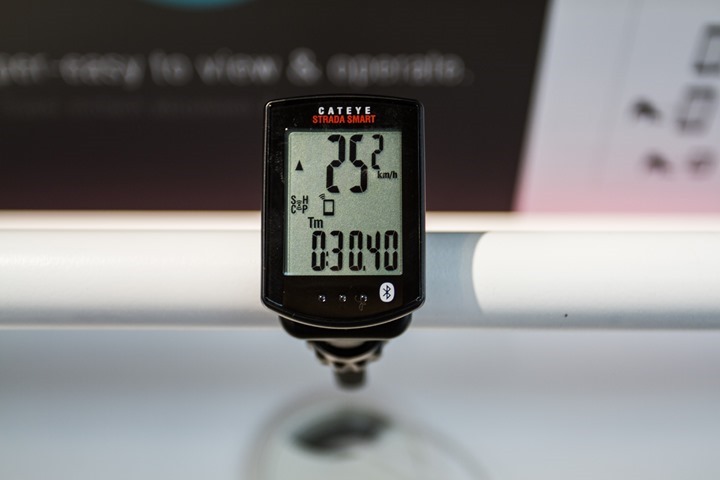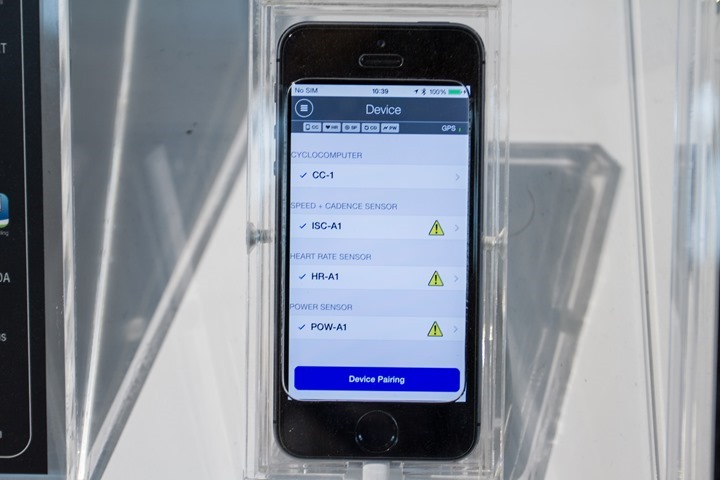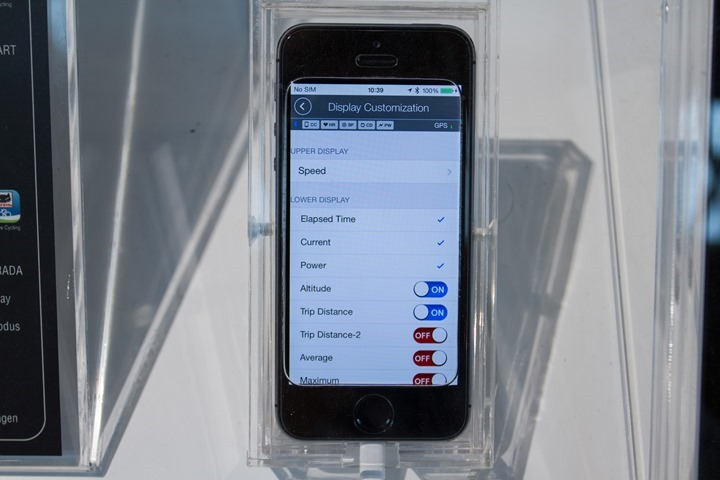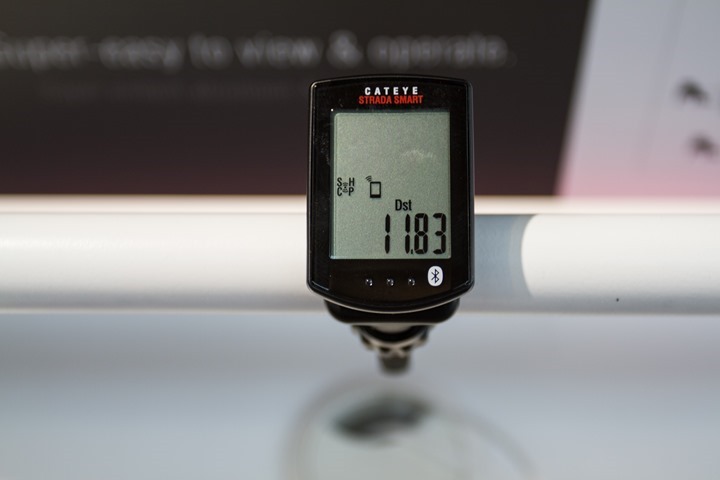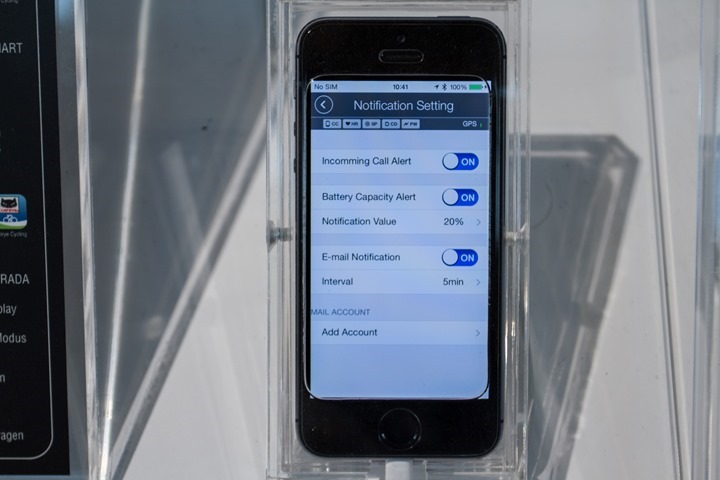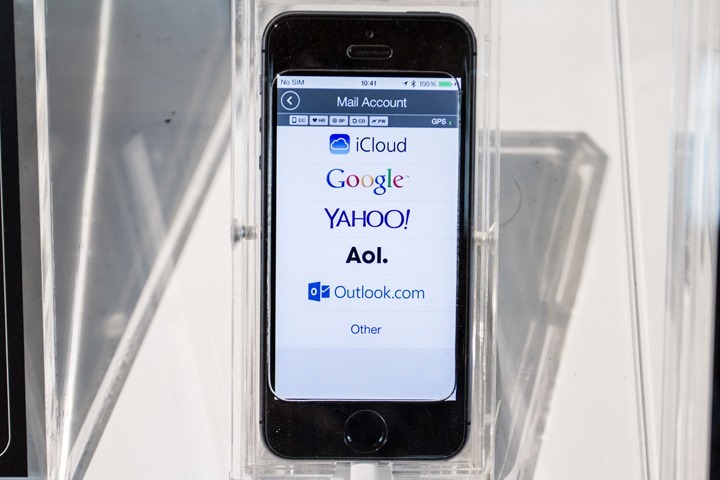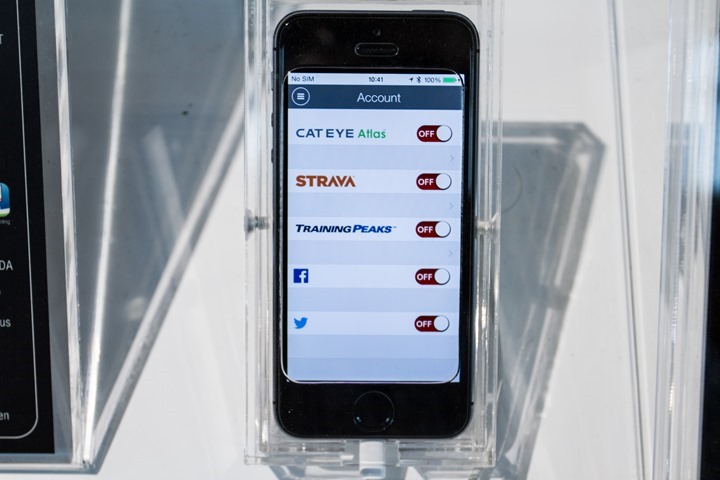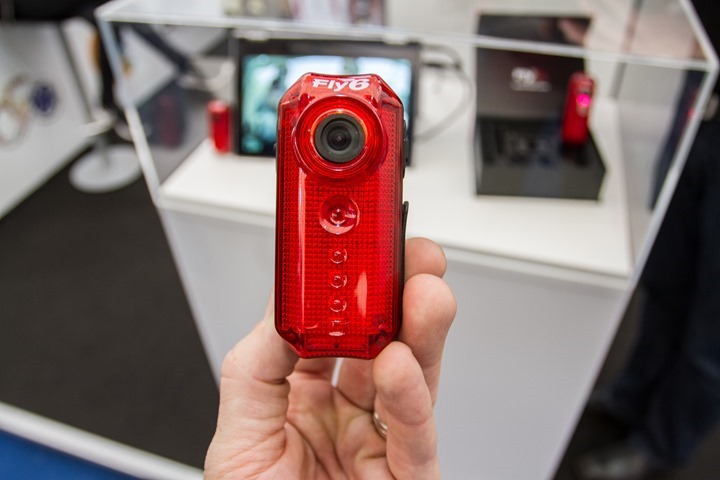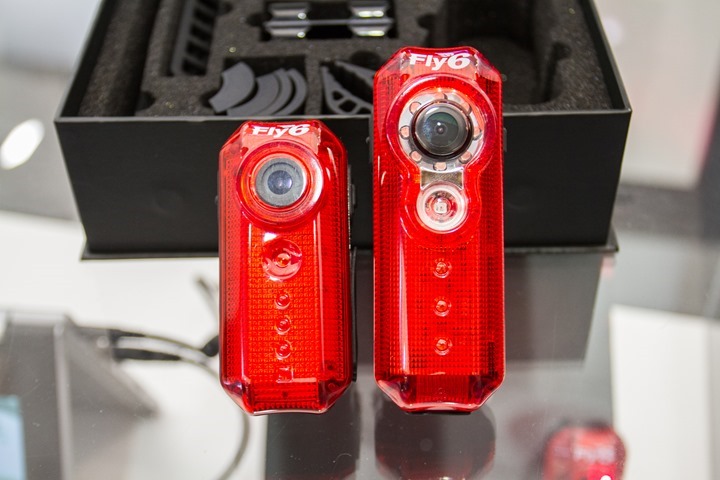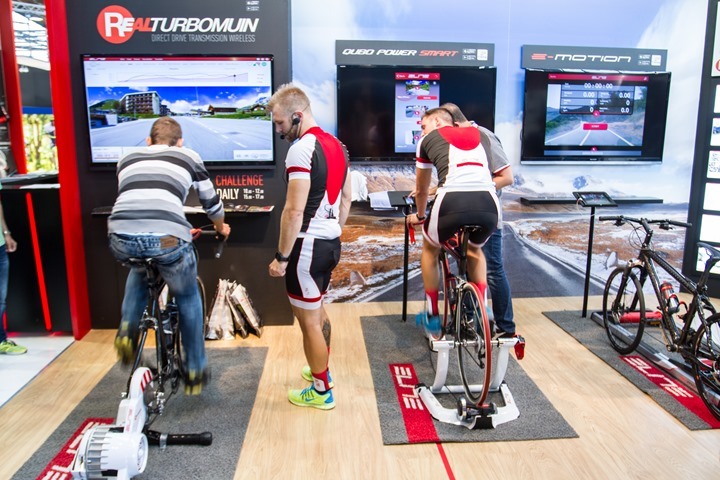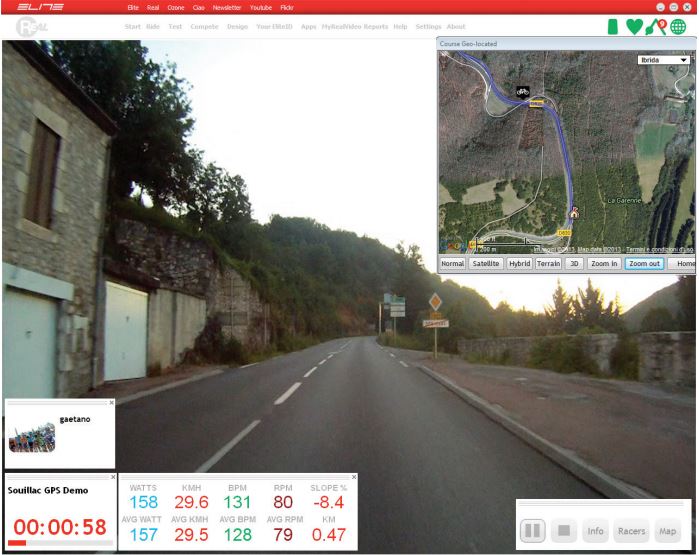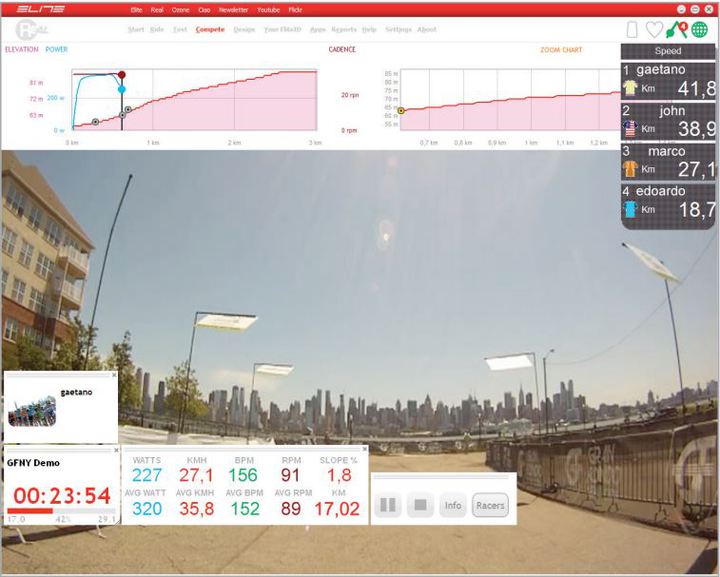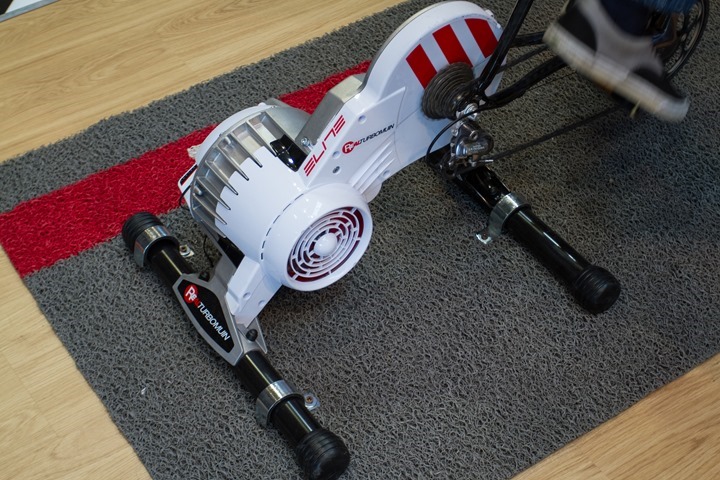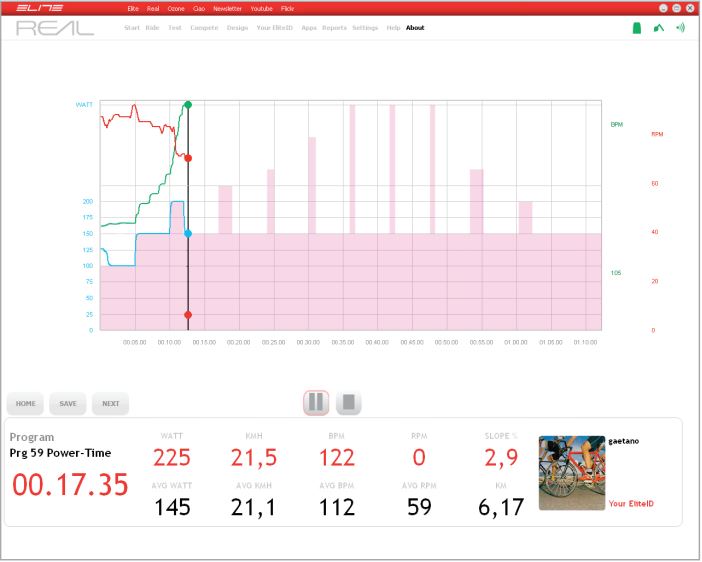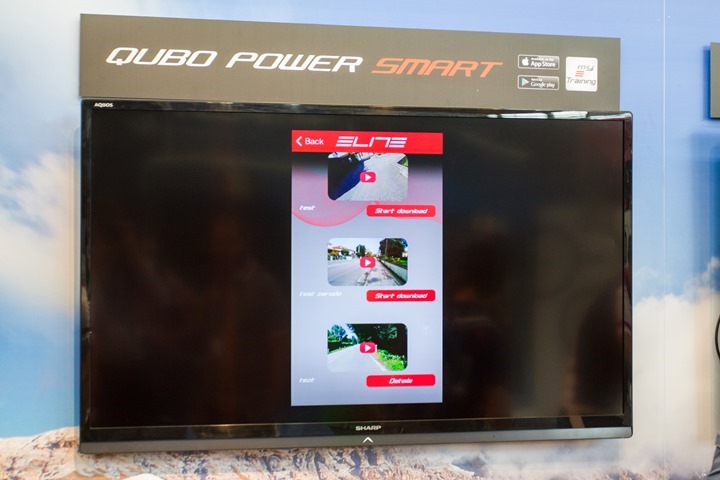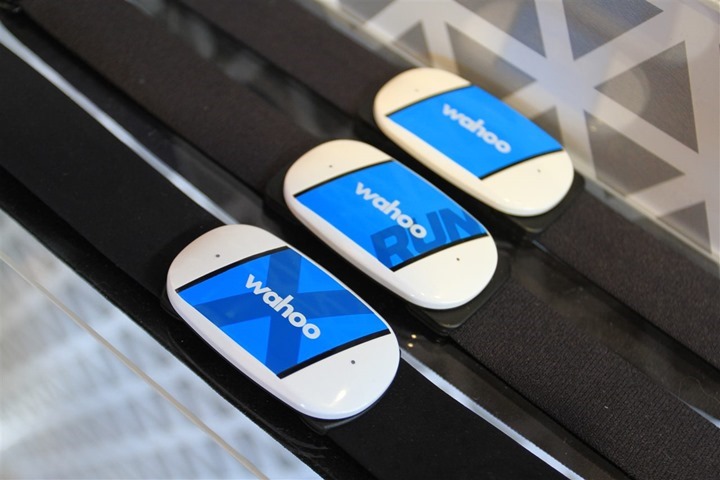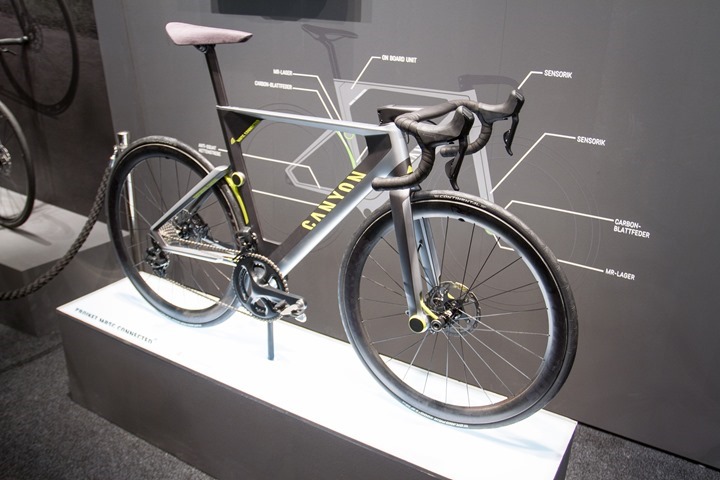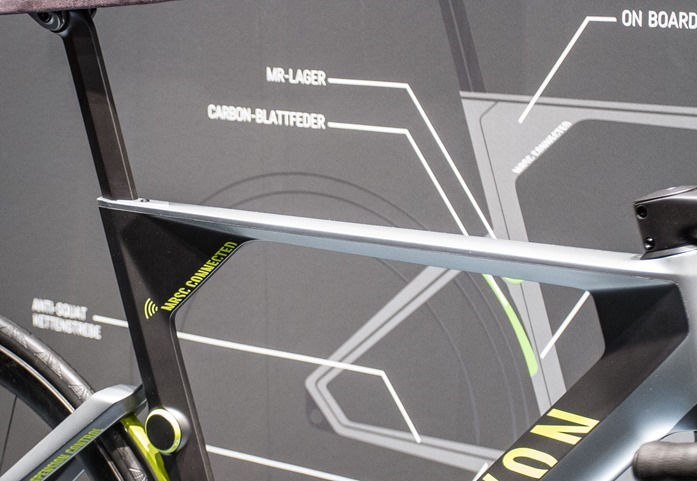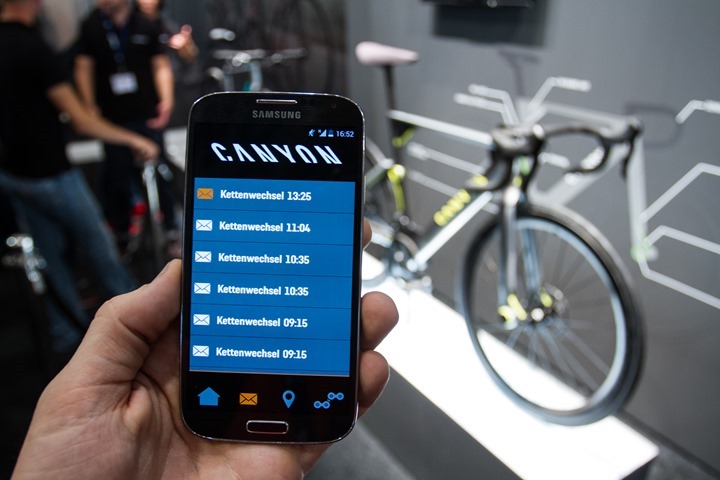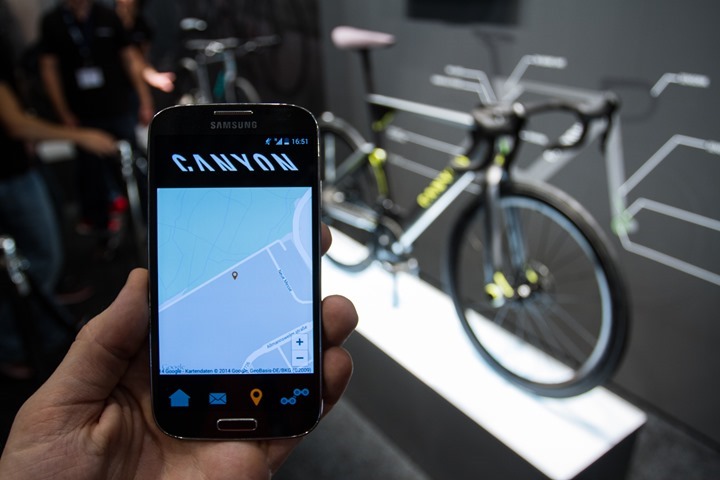There’s a lot of new tech this year on the floor of Eurobike, more so than I’ve seen in years past. On Thursday alone I spent 12 hours in meetings with these companies. And that didn’t even touch all the coolness that I saw on Wednesday or Friday. So here’s the first part of a short series on tech snippets I saw around the show. Some of these I’ll expand down the line into longer posts – potentially at Interbike, or once a product is released.
The Cateye Strada Smart
I’ll just state this upfront: On paper, and on the show floor – this unit looks really damn cool. But super damn cool when you factor in it’s only $75.
This is exactly the sort of bike computer that’s perfect for not only bike commuting, but also for those who don’t need a more powerful unit. Let me explain.
Cateye’s new Bluetooth Smart enabled Strada Smart is a combination of a pared down Wahoo RFLKT, with that of a standard Cateye computer. It has three modes it can operate in, which make it a bit of a non-monogamous player. You’ll see these three modes explained below in more detail after the nearly impossible to photograph chart (because a poorly placed bar was in the way):
These boil down to the following two and a half modes:
Mirror Mode: In this mode, the Smart drives the display. This is identical to the Wahoo RFLKT or RFLKT+, or, the Magellan Echo (though, it doesn’t use those API’s). So you’ve got an app (shown in a moment) that you can configure the data screens for. In this mode it uses your phone’s GPS to provide data like speed, distance and the like (even altitude). Where it diverges though from the Wahoo-based offerings is that it also shows you smartphone notifications such as calls or e-mails. I’ll show you how that works in a minute too. All of this is then recorded and then uploadable to various sites like Strava. So you can very easily just auto-upload your daily commute to Strava, in the event you get a bit frisky mid-ride.
Mirror Mode with sensors: This is a variant of the first mode. All this mode adds is the ability to also display Bluetooth Smart sensor data. They support Cadence, Heart Rate, and Power. In this mode the sensors connect to the phone first, and then the phone sends the data to the unit which displays the sensor data (identical to how the RFLKT works).
Sensor Direct Mode: This mode takes the phone out of the equation entirely. In this mode it connects directly to Bluetooth Smart sensors and displays that data. This is ideal if you somehow don’t have a phone on you. However, the downside is that you can’t upload the data afterwards. Also, there is no GPS in this mode, so you’ll need to ensure the wheel sensor is on there if you want distance or speed.
Next, let’s take a super-quick tour through the app. The unit will only connect to the Cateye app, so you can’t just use any of your normal 3rd party apps. To start, the Cateye app is where you can pair sensors, via this menu here:
These sensors will ultimately enumerate data onto different data pages, which you can configure via the phone app as well:
It’s also the place to be when it comes for setting up your notifications, which are seemingly done through a different place than the standard notification center.
I asked about this, and they did confirm it’s separate. Which, is reasonably annoying. As you also have to manually add in each of your separate mail accounts (such as below). It’s unclear to me if you then have to have space available to cache that mail data. Either way, seems completely wonky – just use the iOS and Android notification centers. That’s what they’re there for.
Next, you can upload to a few different services, including Strava and Training Peaks. They said more would be on the way.
Overall the app is a bit basic, but that’s OK – it seems to tick off all the right boxes, even if the user interface of the app is a bit of a blended 2007 vs 2014 work of art. I can deal with that as long as it works.
So let me put this bluntly: Assuming the unit doesn’t suck in real-life, this is basically an Edge 200 killer (Garmin’s low-end head unit that floats at about $129US). No doubt the Garmin Edge 200 has GPS whereas the Cateye doesn’t. But, for most consumers of the Edge 200, super-long rides aren’t likely an issue (thus, battery on the phone isn’t going to be an issue). Most people buying the Edge 200 aren’t doing 5-7 hours rides. Rather, they’re doing 1-2 hour rides as the norm. So, the integration with the phone and the 3rd party sites and smart notifications would seem to outweigh the GPS pieces on the Garmin (and lack of phone integration). Of course, to each their own.
What I think we’re seeing here is the first attempt at driving down the bike computers in the same way that Soleus and other brands have done on the running side. After all, with the Cateye at $75/€75, it’s a solid bargain.
Fly6 shows off smaller camera:
I showed you the Fly6 unit back this past spring. It’s the little camera that’s built into a rear light system for your bike. It records what goes on around you in the event of an accident (or, ideally, to prevent one).
They’ve been working away on an improved model that has a few definitely worthy changes:
Size: The size has been dropped by about 1/3rd, specifically in the length dimension. You can see that in the photo below.
Battery: They’ve increased battery life to a minimum of 6 hours. They’re hoping to get closer to 8 hours, but they feel confident with stating at least 6 hours of recording/lighting time.
Camera: They’ve increased the quality of the camera used. It’s still 720p, but they went with a higher quality unit that should produce better imagery. Additionally, the camera has improved white balance performance.
Lens change: They’ve improved the lens design a bit, which should reduce the warping effect that can be seen today in the recorded video.
Added G-Sensor: This should improve the crash recognition mode a bit over the existing tilt-switch sensor
Automatic Computer Detection: Now when you plug the unit in, it’ll automatically show up on your computer. Before you had to turn it on after you plugged it in. Thus way it acts just like any other USB storage device.
Light: Finally, they’ve approximately doubled the output of the light used in the unit to about 30 lumens. In addition, they’ve added a solid illumination mode to comply with various European regulations on bike lights (no blinking).
Here’s a comparison between the old unit and the new unit. You’ll notice they moved the USB port to the side from the bottom. They believe this will improve the waterproofing a bit more, though the whole unit is still internally waterproofed – so it can be completely filled with water inside and still live to film another day.
The current plan is to have the new model out by the end of the year, replacing the existing model. The new variant doesn’t have a name yet though, so that too is in the works.
Elite’s new resistance controlled trainer and software:
(Note: Updated section)
Next we’ve got Elite and their series of trainers. They’ve got a number of updates and changes in the lineup this year. First up is that all of their ‘Real’ Trainers will get the ANT+ Trainer profile by the end of the year (though they hope sooner). They’ll also be looking to enable it on other trainers, including the Digital series ones – but there are some hardware dependencies there they need to investigate to validate it’s possible. Some models it might not be possible. They’ll have more information down the road on that. These updates will also be possible via simple firmware update.
That’s huge news to see that at least one company has confirmed going forward with the trainer standard, and having an actual date (versus being wishy-washy).
Next up is they’ve slightly changed the existing Muin Turbo, by increasing its flywheel from 6KG to 7KG. A minor change, but it should give a slightly more realistic feel.
But in addition to the existing Muin, they’ve also released a new electro-magnetic controlled unit – the Real Turbo Muin. This unit allows you to control the resistance on the trainer, just like other higher-end resistance controlled trainers. But it’s not just electronically managed, it also still retains the fluid aspect for the flywheel – which helps it to maintain its more realistic feel. In addition, they’ve added in wireless ANT+ control support.
This means that you can use their RealSoftware suite, which allows everything from workout creation using parameters like wattage, to re-riding outdoor videos.
The software also enables via the internet, racing against others.
Additionally, you can re-ride courses from outdoors by importing in GPS data whereby it’ll then pull the altitude data and re-create the elevation profile of the course and control the trainers resistance.
The unit is able to generate/replicate slopes of up to 18%, topping out at some 2,200w. Most interesting though is that it’s able to still hold about 550w at about 10MPH. This is important because many trainers struggle with holding wattages that high at slow speeds.
The Real Turbo Muin (seen above) is controlled via ANT+ and an ANT+ USB stick. The unit will ship with a freehub compatible with Shimano 9/10/11 speed cassettes (so you’ll have to install your own). Alternatively, they also have one compatible with Campagnolo. The price for the Real Turbo Muin is $1,249US/€1,290, and will ship by early October.
Below, the workout creator seen mid-workout.
At the same time they’re also shipping two new sensors for rollers – the Elite Misuro Blu and +. The Blu variant is simply the Bluetooth Smart version, while the + is the ANT+ version. The Blue version is shipping today, whereas the Plus version will be by the end of the year. They expect to have a dual ANT+/Bluetooth Smart version, but not till about this time next year.
Next, they’ve released a new Android App, which mirrors the functionality of their iOS app. They support both ANT and Bluetooth Smart sensors on both platforms.
Lastly, on the software side you can now upload your own cycling videos to their platform. What’s cool here is that you can view other user’s cycling videos for free. So while the premium ones (that Elite makes/licenses) will cost dough, other people’s are on the house.
Wahoo TICKR X Release Date:
This one is about as simple as it gets: They’ll be releasing next week.
The exact day for the TICKR X hasn’t quite been decided – but the one thing they know is that it won’t be the same day Apple releases their things. So…not Monday. Enjoy!
Canyon’s 3G connected bike:
This year at Eurobike was the year of the ‘concept bike’. These bikes aren’t two-wheeled creations that you can buy immediately – or perhaps ever. But they instead represent ideas and potential areas of innovation. Some of those ideas are very practical and potentially near term. And others…are simply bat-crap-crazy. There were many concept bikes this year, but I only had a chance to check out a few of them – mainly those with some element of sports technology to it.
The first one I saw was Canyon’s offering, where their CEO walked me through all the new features, with a focus on the connected aspects. That component was driven by 3G connectivity straight into the frame itself. You can see the little triangle where the 3G components sit (slightly below it is the equally important bottle opener):
This connectivity was put in place via a partnership with Deutsche Telekom, which did the work on the telecommunications side (in fact, a Deutsche Telekom rep gave me a walkthrough of the app).
This idea behind the connectivity is to directly link with not only friends and family, but also bike shops and potentially emergency personal in the event of a crash. For example, the unit could automatically keep track of bike service requests and coordinate tune-ups by tracking everything from brake pads and the chain via sensors. Below is a notification sent from the bike to the app regarding a chain change being needed (Kettenweschel).
Alternatively, by using accelerometers it could detect a crash and if the person didn’t respond, it could alert emergency personal – similar to some other services already in place today. In a similar vein, it would also be used to track a stolen bike – by having everything fully embedded into the unit.
The idea would be to allow more commonplace concepts as well, like live tracking during a race with sensor data fed into it. But of course – like everything above – it’s just a concept. Albeit one that I thought could easily be executed on with the right interest from companies like Canyon. Here’s to hoping at least some of it comes true by next year.
—
With that, thanks for reading! If you’re looking to burn a bit of time, here’s all my Eurobike 2014 posts! I’ll be doing another one or two tech snippets posts from Eurobike over the next day or two, so stay tuned! The next 10-12 days are going to be pretty busy in these parts…
FOUND THIS POST USEFUL? SUPPORT THE SITE!
Hopefully, you found this post useful. The website is really a labor of love, so please consider becoming a DC RAINMAKER Supporter. This gets you an ad-free experience, and access to our (mostly) bi-monthly behind-the-scenes video series of “Shed Talkin’”.
Support DCRainMaker - Shop on Amazon
Otherwise, perhaps consider using the below link if shopping on Amazon. As an Amazon Associate, I earn from qualifying purchases. It doesn’t cost you anything extra, but your purchases help support this website a lot. It could simply be buying toilet paper, or this pizza oven we use and love.

